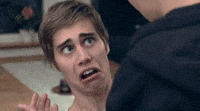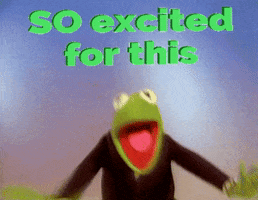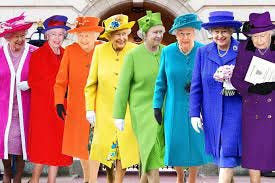Imagine the scene. You’re due at the dentist. The thought of lying back in the chair, with those weird sunglasses on makes your mouth turn dry. The anticipation of the dentist’s drill whining away or the scrape of the plaque picker that seems to want to take your tooth out along with the bacterial biofilm bonded to your bite…
Anxiety through the roof right?
OR
Umm how?
You may have heard the idea that anxiety and excitement feel the same. Physiologically that’s true; the butterflies in the stomach, the tingly sensation in your fingers and toes. Our body has been aroused, releasing chemicals in the brain, stimulating emotions, reducing our cortical functioning and preparing us for action.
When we perceive these feelings negatively, we label them as ‘anxiety’; if they are felt in a positive situation, we label them excitement.
In a different context, a visit to the dentist could be exciting.
I wrote this for one of my sons who was very excited at the prospect of going to the dentist to get his braces off!
Braces off today.
Hooray!
My winning smile is here to stay!
And so its time to celebrate
With pints of coke and tonnes of cake
I’ll gouge out toffees from my gums
And chew forbidden chewing gum
No more dentist trips for me!
Well, surely none that I foresee…
We know that excitement is a temporary emotion. If we view anxiety and excitement as emotional cousins, then that may help when we DO feel anxious, knowing that physiologically the sensations will soon pass and therefore we can focus on the acceptance of the feeling, rather than resisting or fighting it.
I associate the feeling of excitement with being a child. Not that it is a childish emotion, but perhaps because there was more opportunity to have that feeling of excitement and anticipation when we were kids; all those teeth falling out and the prospect of the tooth fairy visiting!
I consider it to be an ‘approach’ emotion, one which can lead to a heightened opportunity of connection, enjoyment and fun. So how can we engender a sense of excitement in our everyday life amongst the laundry and the commute and the news?
How about using colour?
According to Ingrid Fettell Lee in her Ted Talk, colour is a sign of life, energy and abundance.
Author Karen Haller who is an international authority in the field of Applied Colour Psychology explains in her book The Little Book of Colour,
‘When light enters our eye, striking a cone, it trigger the release of a chemical transmitter, initiating electrical messages that are conveyed to the brain and eventually the hypothalamus. The hypothalamus, together with the pituitary gland governs our:
metabolism
appetite
body temperature
water regulation
sleep
autonomic nervous system
sexual and reproductive functions.’
So colour affects us physiologically and psychologically.
Within her book she has a whole chapter dedicated to the relationship between colour and how we feel. According to Karen, every tint, hue and tone of colour has specific psychological effects. The deep greens in an ancient forest can bring about a sense of calm, the tangerine tones of a sunrise uplift and energise.
Red is the go to colour to excite and energise ourselves. Something marketing teams have clearly used to their advantage.
So how can you bring some colour into your life to help energise and excite you?
Wear colour
Karen suggests using a diary to record the colours you wear on different days. Try to fit different colours into each day and notice what impact wearing the different colours has on how you feel and the way in which people interact with you. You can experiment with the intensity of the colours and see if this makes a difference.
In fact, ‘dopamine dressing’ appears to have become a bit of a buzz phrase within the last year and the psychology of fashion is a growing area within the psychology world. If you are interested in this then I recommend listening to The Big Dress Energy Podcast with Shakaila Forbes Bell.
Go on a colour walk
A colour walk is a different way to see the world, encouraging some (dare I say the word) mindfulness in your day. Pick a colour to spot and as you walk, see where you notice it. How does this affect what you remember from the walk?
Listen to different colours
Sound has been classified into different colours.
Pink noise is a good calming noise. In nature pink noise is the sound of steady rain, waves hitting the beach, the rustling of leaves. Brown noise is the sound of rushing waterfalls, rumbling thunder. Both of these can be useful in changing how you feel.
On the theme of colour and feelings, I have recorded this short story called ‘Kai’s back pack’ that I wrote many years ago. I wrote it for one of my sons who had lots of feelings, but was told by a (battleaxe of a) teacher not to feel them at school 🤦🏻♀️. I wrote it to reassure him that feeling his feelings was actually necessary. After all, he didn’t want to end up with a heavy silver backpack on his back… listen in to find out what I am talking about!
Finally, I use colour with my clients when we are using EFT (emotional freedom technique). Sometimes it is really difficult to label the actual feeling we are feeling. During an EFT session I may work with a client by asking them what colour or texture the emotion or sensation has. It doesn’t have to mean anything, but being able to put some sense of description about an experience can help the client to begin to process it.
How do you use colour? Have any of the ideas in this newsletter prompted you into action? Did you listen to the story - I think it’s one for our inner child, what did you think? I’d love to hear!
Thank you so much for being a paid subscriber! Please share this with anyone you think may find it educational or entertaining.










